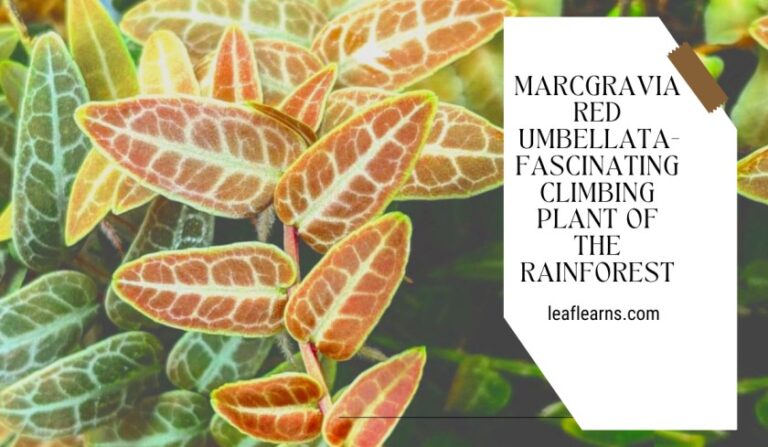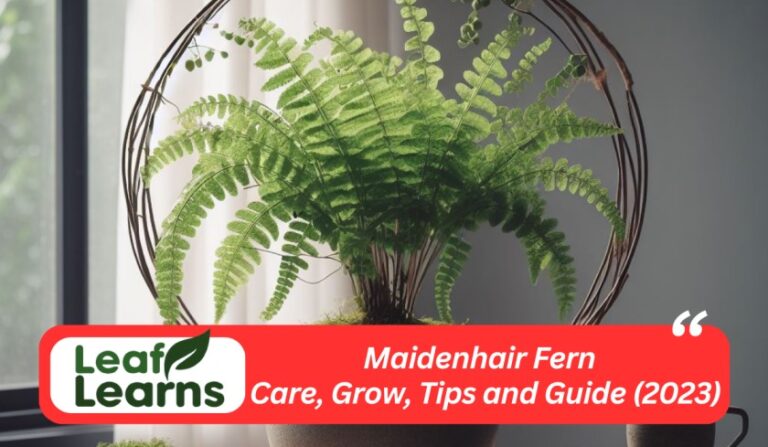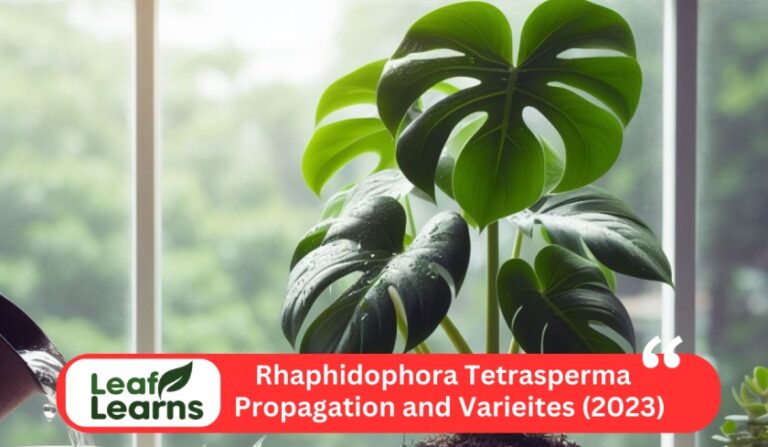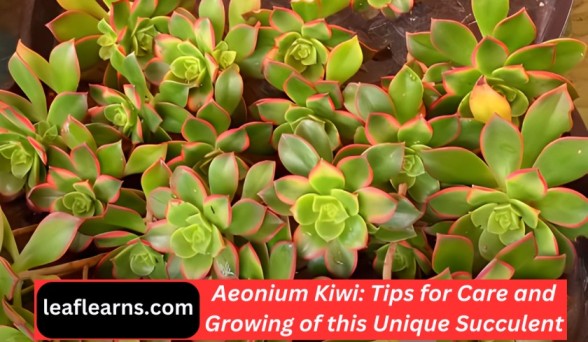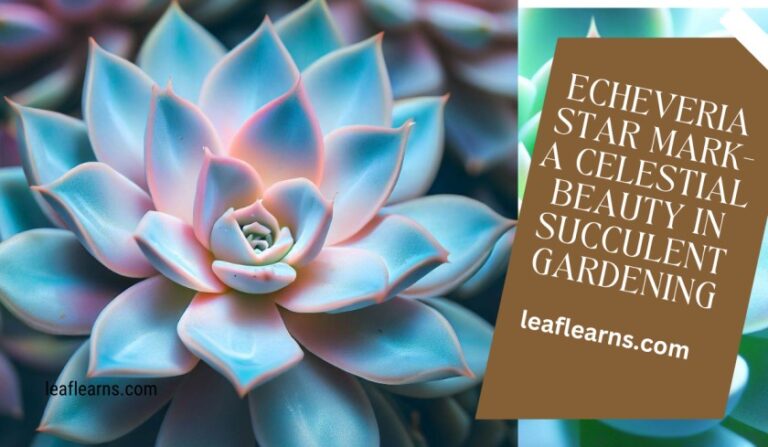Echeveria Lilacina ‘Ghost Echeveria’ Care and Grow (2023)
Succulents such as Echeveria lilacina are easy to grow and tolerant of both indoor and outdoor growing conditions. In the spring, this Echeveria turns a stunning lavender-pink color from its powdery blue-green leaves. Bees and butterflies enjoy the yellow flowers produced by Echeveria lilacina during the summer.
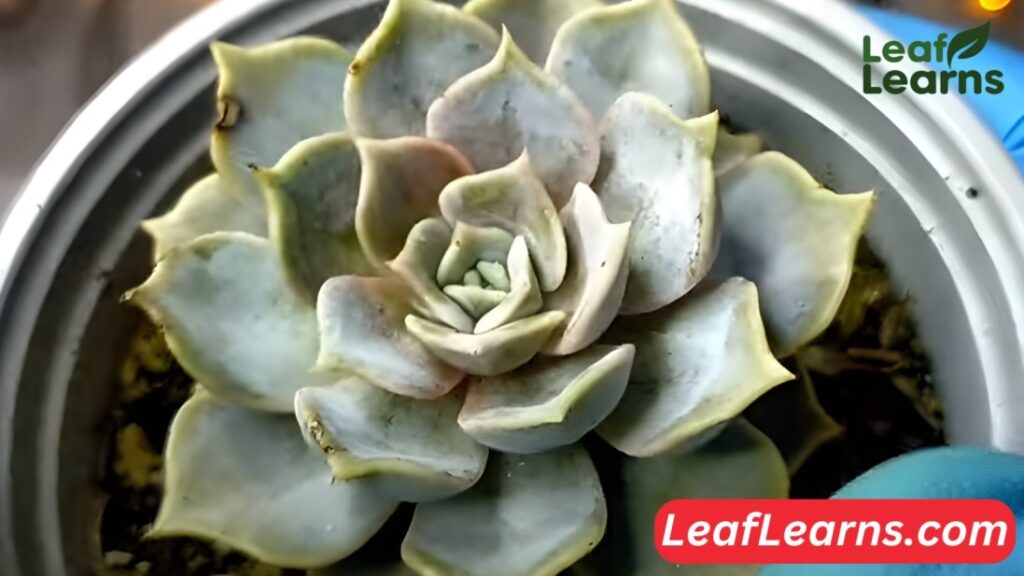
Despite its relatively fast growth rate, this Echeveria can reach a diameter of up to 8 inches. The plant prefers moist soil and bright sunlight, but will tolerate some shade as well.
Ensure the soil is completely dried between waterings when watering Ghost Echeveria, as it is drought tolerant.
| Common Name | Ghost Echeveria, Mexican hens and chicks |
| Scientific Name | Echeveria-Lilacina |
| Family | Crassulaceae |
| Origin | Nuevo Leon in northern Mexico, Central America |
| Plant Type | Succulent |
| Size | Compact rosette, 6-8 in (15-20 cm) in diameter |
| Lifespan | Perennial |
| Leaf Colour | Pale silvery-green |
| Leaf Size | Thick, spoon-shaped, up to 3 in (7.5 cm) long |
| Flower | Delicate, pastel-colored blooms in rosette clusters |
| Light | Full sun to partial shade |
| Water | Infrequent, well-draining soil to prevent root rot |
| Soil | Well-draining succulent mix |
| Temperature | 50-80°F (10-27°C) |
| USDA Zone | 9-11 |
| Humidity | Low to moderate |
| Fertilizer | Balanced, diluted succulent fertilizer during growing season |
| Propagation | Offsets (“pups”), seeds |
| Pruning | Remove dead or damaged leaves |
| Pests | Mealybugs, aphids, spider mites |
| Toxicity | Generally safe for pets, but ingestion may cause mild discomfort |
| Uses | Ornamental, indoor and outdoor gardens, succulent arrangements |
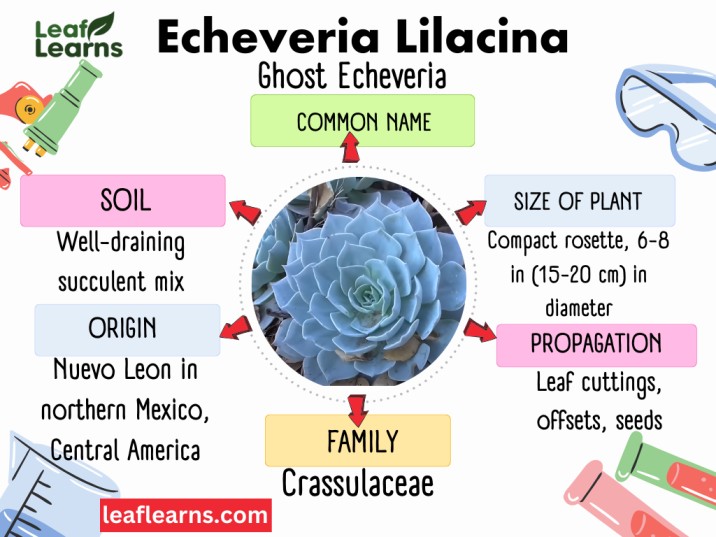
Contents
- 1 Intriguing facts to capture attention
- 2 What is Echeveria-Lilacina?
- 3 What’s Unique About Ghost Echeveria?
- 4 Top Care Tips
- 5 Care for Echeveria Lilacina
- 6 Propagation
- 7 Pruning
- 8 Repotting
- 9 Encouraging Bloom
- 10 Growth Rate and Size
- 11 Flowering and Foliage
- 12 Appearance
- 13 Fragrance
- 14 Underwatering and Overwatering
- 15 Overwintering
- 16 Pests and Diseases
- 17 Problems and Solutions
- 18 Toxicity
- 19 Varieties and Types
- 20 Uses and Benefits
- 21 Planting
- 22 Invasive Potential
- 23 Nurturing Echeveria-Lilacina: Aesthetic Appeal and Pet-Friendly Care
- 24 Cultivating Echeveria Lilacina: Propagation, Blooming, and Varietal Splendor
- 25 Conclusion
- 26 FAQs
Intriguing facts to capture attention
- Color: In the summer, Echeveria-Lilacina’s delicate lilac shade transforms into powdery blue-green leaves. A dynamic and ever-changing plant, this color shift occurs as a result of increasing sunlight exposure.
- Having a low maintenance requirement makes Ghost Echeveria an excellent succulent for both novice and experienced gardeners. As long as it receives well-draining soil and is not watered excessively, it can be enjoyed with minimal effort.
- Plants like Ghost Echeveria are compact by nature, so they are a wonderful addition to any garden or home. Terrariums and containers benefit from its compact size as well.
- Its attractive rosettes provide you with an uninterrupted visual source of interest all year long, making it a year-round interest. While it remains dormant during the winter months, its unique coloration remains an eye-catching feature.
- Stunning bell-shaped flowers decorate the rosette of Echeveria-Lilacina as it matures. In addition to adding to the plant’s overall charm, these delicate blooms are a testament to its beauty.
What is Echeveria-Lilacina?
In addition to its distinctive coloration and rosette shape, Ghost Echeveria, also known as Mexican hens and chicks, is an intriguing succulent.
The striking appearance and ease of care of this succulent have made it popular among succulent enthusiasts throughout the world.
Description and Characteristics
The spoon-shaped leaves of Echeveria-lilacina cover a striking rosette that gradually widens towards the tips.
In addition to their soft, velvety texture, the leaves have a subtle lilac-grey hue brought about by a powdery coating called farina.
It creates a mesmerizing spectacle of pastel shades as the rosettes grow to up to 10 inches in diameter.
Origins and Natural Habitat
This plant grows along the rugged slopes and hills of central Mexico, where it thrives in semi-desert conditions.
The fleshy leaves of these succulents are adapted to the dry, scorching climate, enabling them to survive drought periods.
What’s Unique About Ghost Echeveria?
Among the Echeveria species, Echeveria-Lilacina is one that stands out due to its distinctive appearance. A distinctive feature of this plant is its delicate, pastel-tinted rosettes adorned with lilac-tinged dustings.
As its gray-green foliage contrasts against this ethereal hue, this plant captivates plant lovers with its charm. Its captivating color is not the only factor that makes the Ghost Echeveria so appealing.
There are delicate spoon-shaped leaves on each branch that are arranged in a symmetrical rosette.
In addition to providing aesthetic appeal, these fleshy leaves also function as water reservoirs, allowing the plant to survive in arid climates.
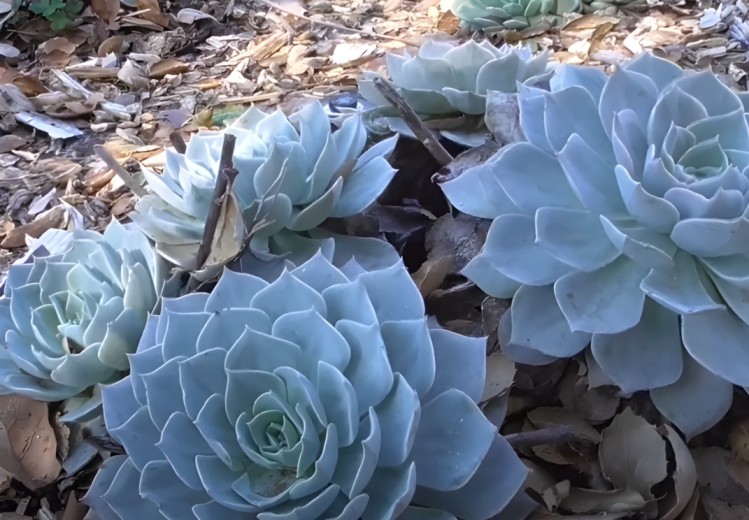
Top Care Tips
- Keep succulents and cacti in a well-draining potting mix to prevent root rot.
- Keep the soil dry between waterings by watering thoroughly but infrequently.
- This plant should be fertilized every two weeks with diluted liquid fertilizer during the growing season (spring and summer).
- Your Ghost Echeveria will outgrow its current pot every two to three years, so repot it every two to three years.
Care for Echeveria Lilacina
Light Requirement
This plant thrives in warm climates and requires ample sunlight to flourish.
Summer Sun Needs
A bright, direct sun is essential for the growth of this type of plant during the summer months. Your plant should be placed in an area that receives at least six hours of direct sunlight per day.
The best place to place your Ghost Echeveria is in a south-facing window or on a sunny patio.
Winter Sun Needs
The light requirements of Echeveria-Lilacina change as the days become shorter and the temperatures cool in the winter. In spite of preferring bright light, leaves can scorch if exposed to direct midday sun.
Wintertime can be made more comfortable with a west-facing window or sheer curtains near a bright window.
Spring and Fall Sun Needs
The perfect time for this plant is in spring and fall, when the temperature and light are just right. Make sure your plant receives 6 hours of direct sunlight each day by placing it in a sunny location.
During the hottest part of the day, you may want to provide some afternoon shade if you live in a particularly hot region.
Water Requirements
There are some specific watering requirements for this plant, but it is relatively low-maintenance.
Watering Schedule
- Water deeply and infrequently during the summer months. It is advisable to wait at least a week between waterings to allow the soil to dry completely.
- Water needs are very low during the winter season for Echeveria plant. If you water it once a month or less, you may not have to water it at all.
- A much more frequent watering is required in the spring and autumn, when Lilacina plant is actively growing. A smaller amount of watering is required in the summer, when it is actively growing. Based on the soil conditions, water it once or twice a week.
Tallness
In height, Echeveria Lilacina can grow to 8-12 inches and in width, it can reach 6-8 inches. Since it grows slowly, it may take several years for it to reach its full potential.
Soil Requirement
Succulent enthusiasts appreciate this plant’s easy care and ability to thrive in well-draining soil.
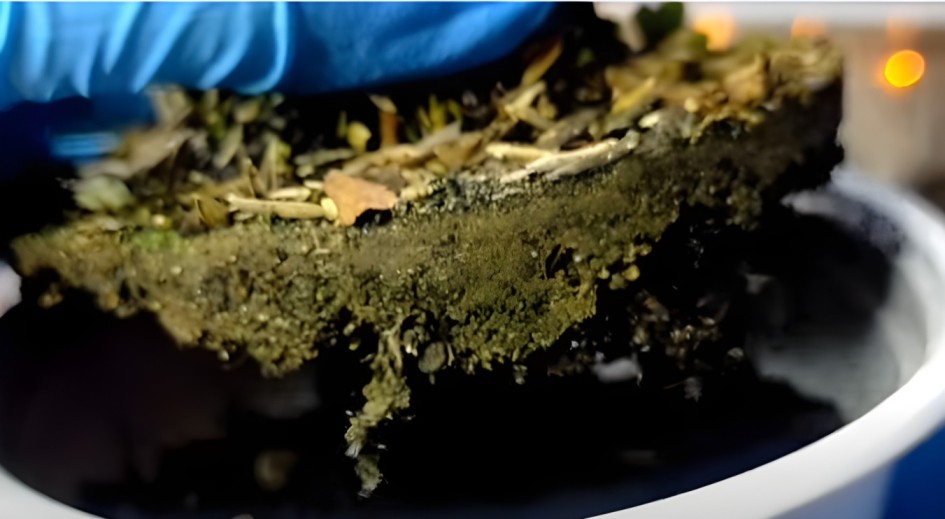
The Ideal Soil Mix
Soil should mimic the desert environment in which Ghost Echeveria grows, with adequate drainage and aeration. It is highly recommended that succulents and cacti be planted in well-draining potting mixes.
An ideal blend of moisture retention and drainage is provided by combining coarse sand, perlite, and potting soil.
Seasonal Soil Considerations
Depending on the season, Ghost Echeveria requires different soils:
Spring and summer: These succulents need a bit more moisture during the active growing season. You can enhance water retention by adding organic matter to the potting mix, such as peat moss or compost.
Winter and fall: The plant’s water needs decrease as it enters dormancy. Allow the soil to completely dry between waterings in order to prevent root rot.
Temperature Requirement
Summer: A warm, dry environment is preferred by Echeveria-Lilacina during the summer. In order to achieve optimal results, the temperature should be between 65°F and 80°F (18°C and 27°C).
Direct sunlight can scorch Mexican hens and chicks leaves, so keep it out of direct sunlight. Bright, indirect light is best.
Winter: A cooler temperature is needed for Mexican hens and chicks during the winter when it enters a dormant phase. Temperatures between 50°F and 60°F (10°C and 15°C) are ideal for winter.
It is susceptible to frost damage if exposed to temperatures below 50°F (10°C).
Spring and Fall: This plant is more tolerant of warmer temperatures during the spring and fall. Temperatures between 55°F and 75°F (13°C and 24°C) are ideal during spring and fall.
Humidity Requirement
Summer: A low to medium humidity is ideal for the growth of Mexican hens and chicks in the summer. Excess moisture can lead to fungal diseases if the plant is misted or placed near humidifiers.
Winter: It can tolerate slightly higher humidity levels during winter, when the air is naturally drier.
While the plant shouldn’t be directly placed on a radiator, it should still be kept away from heat sources as they can dry out the leaves.
Spring and Fall: It is generally possible for Ghost Echeveria to tolerate normal home humidity levels in the spring and fall. In areas with very dry air, you may need to fill a pebble tray with water to increase humidity around the plant.
Fertilizer Requirement
The Echeveria-Lilacina is a gorgeous succulent that requires little fertilization to grow. During the growing season, light fertilizer can boost its growth and encourage vibrant blooms, even though it doesn’t need any heavy feeding.
Spring and Summer
- You can stimulate healthy growth by applying diluted fertilizer once a month as your this plant emerges from winter dormancy.
- It is recommended to repeat the procedure every two weeks during the summer when the growing season is at its peak. Overfeeding can be prevented by using a balanced liquid fertilizer diluted to half strength.
Fall and Winter
- Fertilize once a month as the temperature drops in the fall.
- In winter, do not fertilize the plants during dormancy. In order to prepare for the next growing season, let the plant rest and conserve energy.
Potting Requirement
A well-draining potting mix is essential for the flourishing of Ghost Echeveria, a succulent known for its rosette-shaped leaves. In this well-draining mix, succulents are properly aerated and root rot is prevented.
Summer Potting Needs: It is recommended that Echeveria-Lilacina be planted in a slightly heavier potting mix during the summer months to keep the plant moist. Perlite, coarse sand, and potting soil should be mixed in a 2:1:1 ratio.
Winter Potting Needs: To reduce watering frequency, winter potting mixes should be more lightweight than summer potting mixes.
In general, it is recommended that potting soil, perlite, and coarse sand be mixed at the ratio of 3:1:1. It prevents root rot during the dormant season by allowing excess water to drain quickly.
Spring and Fall Potting Needs: The transition between active growth and dormancy occurs in spring and fall. This season is ideal for using a potting mix composed of potting soil, perlite, and coarse sand in a 2:1:2 ratio.
Propagation
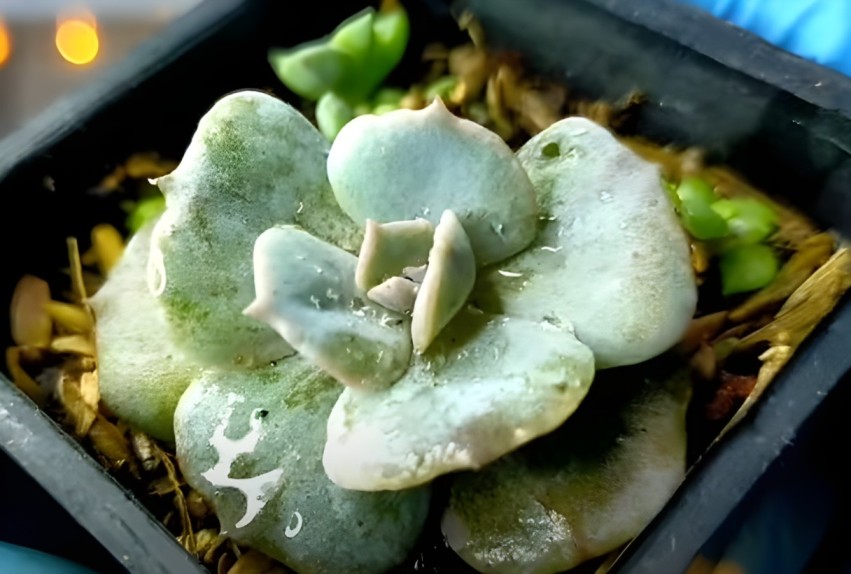
Gathering the Essentials
- Sharp and sterilized pruning shears or knife
- Well-draining potting mix specifically formulated for succulents and cacti
- Shallow trays or pots with drainage holes
- Spray bottle for misting
- Labels or markers for identification
Propagating by Leaf Cuttings
Propagation of this plant by leaf means is the most common and straightforward method. Follow these steps to achieve success:
- Select Healthy Leaves: Ensure that the leaves on your Echeveria-Lilacina’s outer rosette are mature and healthy. Leaves marked with wrinkles, damage, or disease should not be used.
- Gently Twist and Remove: Tighten the base of the leaf and twist it until the leaf detaches from the stem. To prevent cell damage and hinder rooting, don’t pull or tear the leaves.
- Allow Callousing: Give the detached leaves a few days to harden, preferably on a well-ventilated surface away from direct sunlight. Rooting is more likely to be successful if the wound is sealed and moisture loss is prevented.
- Prepare the Potting Mix: Use potting mix suitable for succulents and cacti in shallow trays or pots. The potting mix should be moistened slightly, but not saturated.
- Lay the Leaf Cuttings: Lightly moisten the potting mix and place the calloused leaf cuttings on top. Place the leaves flat on the ground, not buried.
- Mist and Provide Bright, Indirect Light: Give the leaf cuttings a light mist before placing them in a bright, indirect location. Leaves should not be exposed to direct sunlight, which can burn them.
- Monitor and Provide Humidity: Mist the leaf cuttings when the soil feels dry to the touch and monitor the moisture level of the potting mix. Additionally, a plastic dome or bag can be placed over the tray or pot to increase humidity.
- Patience is Key: Avoid disturbing the leaf cuttings. There can be a delay in rooting for several weeks, so patience is essential. The base of the leaves may develop small roots, indicating successful rooting.
- Planting the Rooted Cuttings: Transplant the rooted cuttings into individual pots once the roots reach a length of approximately one inch. Plant the rooted cutting in each pot, fill it with cacti and succulent potting mix, and water it thoroughly after planting.

Propagating by Offsets
Offsets, also called pups, are small rosettes that grow around the mother plant’s base. This plant also produces offsets. To propagate using offsets, follow these steps:
- Gently Remove Offsets: Make sure the roots remain intact as you loosen offsets from the mother plant.
- Allow Callousing: In a well-ventilated area, let the detached offsets callous for a few days.
- Plant the Offsets: Plant succulents and cacti in pots filled with well-draining potting mix. Plant the calloused offsets gently, covering the roots but not burying them too deeply. Thoroughly hydrate.
Pruning
In spite of its low pruning requirements, Lilacina plant occasionally benefits from a gentle trim to look better and grow healthier. Especially when the stems or leaves become leggy or elongated, pruning is beneficial.
Identifying the Need for Pruning
- Growth Leggy Growth: When Mexican hens and chicks lacks sufficient light, the stems and leaves become loose, which can lead to leggy growth.
- It is important to remove damaged or dead leaves to prevent disease from spreading and to promote the health of the plants as a whole.
Pruning Technique
- To make precise cuts, use a knife or scissors that are clean, sharp, and sterile.
- It is best to prune in the spring or summer when the plant is in an active growth phase.
- If your plant grows leggy, carefully cut it at its desired point so that it can form a new rosette after it has grown. Pinch off dead or damaged leaves at the base if they are damaged or dead.
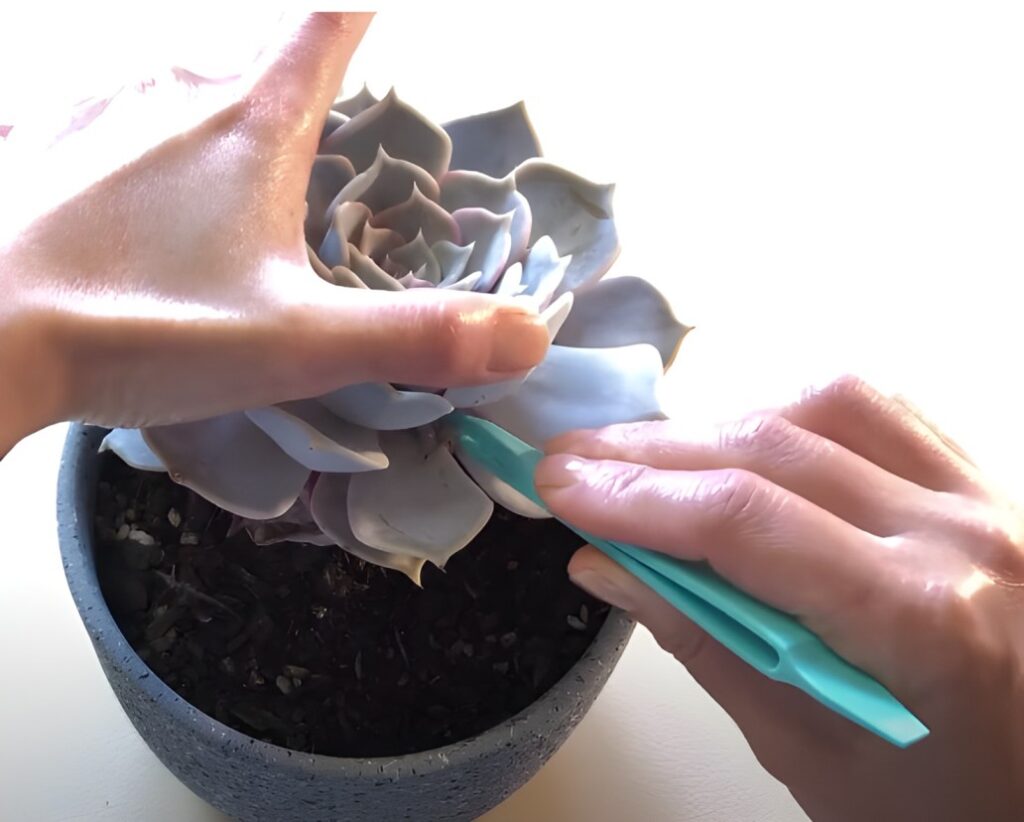
Repotting
In time, your plant will outgrow the pot it is currently in, so it will need to be repotted. In addition to freshening up the soil mix and improving drainage, repotting also accommodates the root system of the plant, which is constantly growing.
Signs Indicating the Need for Repotting
- Seeing roots through drainage holes indicates that the pot is too small when roots start to protrude through.
- It is highly recommended that you replace the pot if the soil remains soggy even after watering for several days after watering.
- Pots that are too small can cause the plant to topple over due to its top-heavy appearance.
Repotting Technique
- Make sure the pot has adequate drainage holes by choosing a larger pot than the current one.
- Cacti and succulents should be planted in a potting mix that drains well.
- This plant should be watered after it is freshly potted. Allow it to dry out completely before watering again.
Encouraging Bloom
Embrace the Sun’s Embrace
A plant such as Mexican hens and chicks thrives on the warmth of the sun in order to flower. Make sure it receives ample indirect sunlight by placing it near a south-facing window.
Its delicate leaves, however, can be scorched by direct sunlight, so diffuse it with sheer curtains or a shade cloth.
Provide a Well-Drained Oasis
An arid potting mix mimicking Ghost Echeveria’s native habitat is ideal for propagating it. Cactus and succulent mixes are commercially available, so excess water can easily escape.
A succulent’s nemesis is root rot, which prevents healthy root development and prevents root rot.
Water with Wisdom
A delicate balance needs to be struck when watering Echeveria Lilacina. In order to mimic the natural rhythm of the soil, let it dry completely between waterings.
It is recommended to water more frequently in the summer months and less frequently in the cooler months.
When roots are overwatered, they will rot, while when they are underwatered, their growth and flowering will be stunted.
Embrace the Power of Patience
Slow-growing succulents like this plant require patience when nurturing their blossoms.
Depending on the variety, some varieties may flower within a year, while others may take three years or more. Nature must be allowed to take its course and the right conditions must be provided.
Fertilize for Flourishing Blooms
A diluted balanced liquid fertilizer can be used during the growing season to boost Echeveria-Lilacina.
Make sure the soil is moist before applying fertilizer every 2 weeks. Fertilizing during the winter months is not recommended due to the dormancy of the plant.
Repot for Continued Growth
During its maturation process, Ghost Echeveria will need more space for spreading its roots and supporting its blooms.
Whenever it grows, repot it into a larger container every two to three years. The soil will be revitalized and nutrients will be provided when you use fresh potting mix.
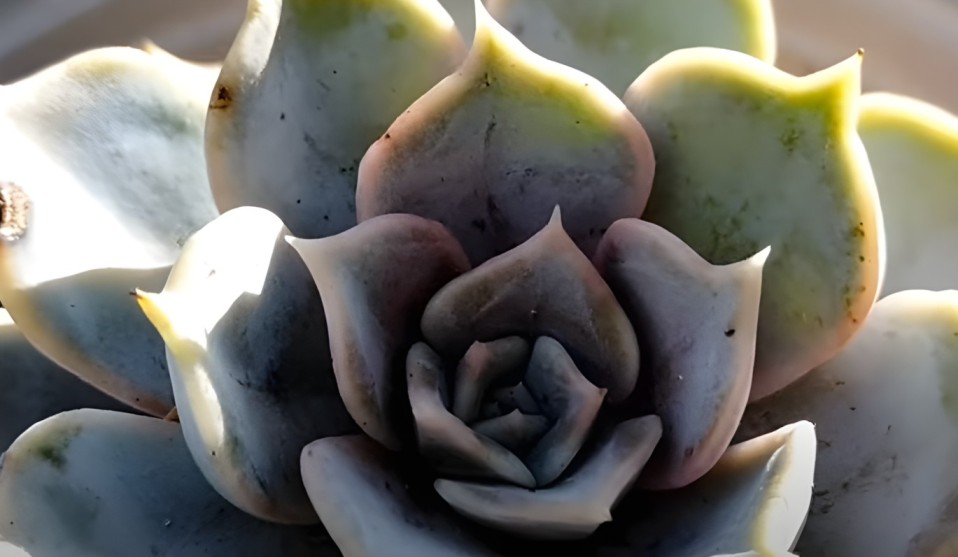
Growth Rate and Size
The rosettes of Ghost Echeveria grow slowly each year, adding about 2-4 inches to their size. By developing its intricate rosettes at a deliberate pace, it is able to prepare for flowering.
The diameter of the mature plant can reach 8-12 inches under ideal conditions.
Flowering and Foliage
Spring and summer are usually the times of flowering for Mexican hens and chicks, though cultivars can vary.
With its bell-shaped blooms and silvery-gray rosettes, it adds a splash of color to any garden. Featuring a variety of hues from soft pastels to vibrant corals and pinks, this arrangement is a spectacular sight to behold.
This plant is equally mesmerizing when it comes to its foliage. A silvery-gray powdery farina often adorns its fleshy, spoon-shaped leaves, giving them a silvery-gray appearance.
Its captivating beauty is further enhanced with a subtle blush of lilac or coral on the leaves.
Appearance
Known for its plump, spoon-shaped leaves that range in color from pale green to deep purple, Echeveria-Lilacina is a beautiful succulent.
There is a powdery farina covering the leaves, which gives them a soft, velvety feel. Small, bell-shaped flowers in pink, yellow, or orange can be found on the rosettes, which can grow up to 8 inches in diameter.
Fragrance
During the evening, Mexican hens and chicks emits an inconspicuous but sweet fragrance. There is a similarity between the fragrance and that of honey or vanilla.
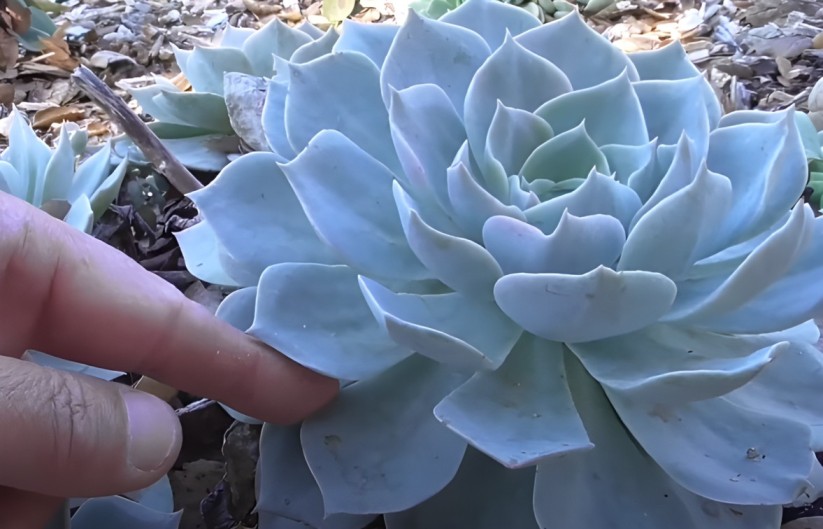
Underwatering and Overwatering
Water is stored in the leaves of Ghost Echeveria, making it drought-tolerant.
Overwatering and underwatering can both cause problems. Leaves that appear sunken or hollow may be wrinkled or deflated from underwatering. On the other hand, overwatering can lead to mushy, plump leaves.
The soil must drain well and be watered thoroughly after it has completely dried. Waterlogged soil should be avoided and excess water should be allowed to drain completely.
Overwatering is more challenging. Overwatered soil should be allowed to dry completely before watering again.
The plant may need to be removed and checked for root rot. Repot your plant in fresh, well-draining soil if the roots are brown and mushy.
Overwintering
Cold can damage Ghost Echeveria. Your plant needs adequate protection as temperatures drop in the fall. Echeverias can be kept outdoors in sheltered locations if you live in a mild region.
Temperatures below freezing should be brought indoors if the Echeveria is expected to survive.
Bright, indirect light is best for your Echeveria.
Temperature fluctuations may result from placement near drafty windows or heating vents. Keep Echeverias dry during winter months by watering sparingly.
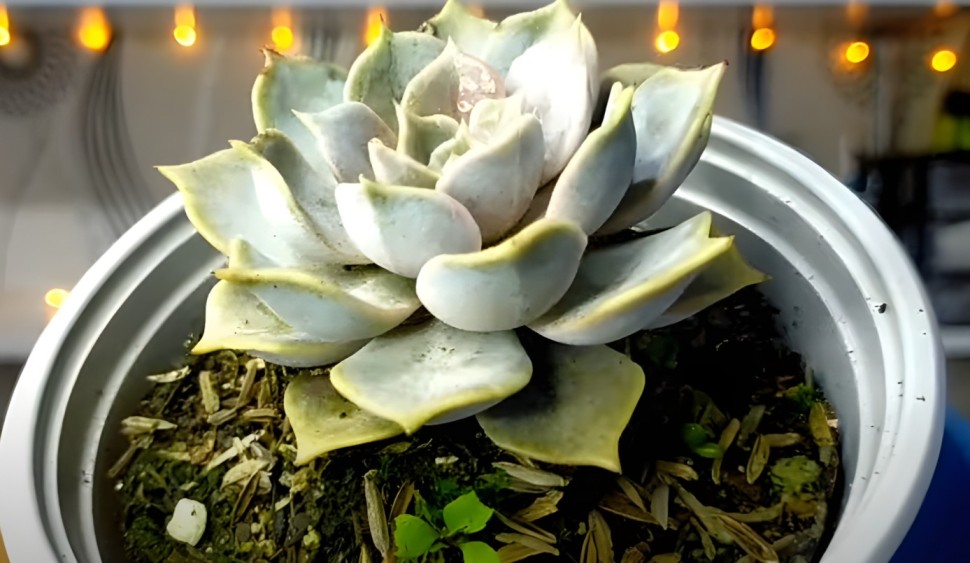
Pests and Diseases
Generally, Ghost Echeveria is insect- and disease-resistant, but it can suffer from a few problems. Small, white mealybugs look like cotton balls. They weaken leaves by feeding on sap.
Cotton swabs dipped in rubbing alcohol are effective in removing mealybugs. Also, use insecticidal soap or neem oil as natural insecticides.
Infestations of Echeveria-lilacina can also be caused by scale insects. On the leaves, they look like hard bumps. Remove scale insects manually with rubbing alcohol dipped cotton swabs.
Insecticidal soap or horticultural oil are natural insecticides.
Ghost Echeveria can be affected by root rot, a fungal disease, if the soil is too wet.
Foliage turns yellow and mushy, and the plant smells foul. You should only water your plants after the soil has completely dried to prevent root rot. Root rot must be treated immediately by removing the plant from its pot. Fresh, well-draining soil should be used to repot any damaged roots.
Problems and Solutions
Problem: Leaves Turning Brown
Solution: Provide ample sunlight for your Echeveria-Lilacina and let it fully dry between waterings in order to remedy brown leaves.
Problem: Tall and Leggy Growth
Solution: Encourage more sunlight to prevent leggy growth, and behead succulents so they develop a more compact shape.
Problem: Wrinkled Leaves
Solution: Adjust your watering routine to prevent wrinkled leaves by increasing water during active growth and reducing water during dormancy.
Problem: Pest Infestation
Solution: Use neem oil or insecticidal soap to control pests such as mealybugs and aphids, applying them directly to the affected areas.
Problem: Root Rot
Solution: Repot succulents into well-draining soil, trim roots affected by root rot, and ensure proper watering practices to prevent waterlogging.
Problem: Echeveria-Lilacina Not Flowering
Solution: During the growing season, provide adequate sunlight, adjust fertilization, and allow succulents to cool during winter.
Toxicity
Toxicity for Humans
It is not considered toxic to humans to consume Echeveria Lilacina. The plant should not be ingested, however, so it is advisable to exercise caution.
There may be mild gastrointestinal upset if you accidentally consume Mexican hens and chicks, such as nausea, vomiting, or diarrhea.
Toxicity for Cats and Dogs
Cats and dogs are not poisoned by Echeveria Lilacina. Your pet may experience mild gastrointestinal upset if they ingest a large amount of the plant. Your veterinarian should be contacted immediately if you suspect your pet has consumed Mexican hens and chicks.
Symptoms of this plant poisoning in pets may include:
- Vomiting
- Diarrhea
- Drooling
- Lethargy
- Loss of appetite
There is no specific antidote for Echeveria-Lilacina poisoning. Treatment will be supportive and may include:
- Inducing vomiting
- Activated charcoal
- Fluids
- Electrolytes
Varieties and Types
Let’s delve into some of the most popular and captivating varieties:
- Echeveria-Lilacina ‘Ghost Echeveria‘
- Echeveria-Lilacina ‘Kimnach‘:
- Echeveria-Lilacina ‘Moran’:
- Echeveria-Lilacina ‘Purpusorum’
- Echeveria-Lilacina ‘Mesembryanthemoides’
- Echeveria-Lilacina ‘Lophophora‘
Uses and Benefits
- Ornamental Beauty: Adding a touch of natural elegance to your living space is Ghost Echeveria, which has a captivating rosette and silvery-green leaves.
- Succulent Arrangements: Create visually appealing and diverse succulent arrangements with Echeveria Lilacina.
- Indoor Greenery: Low-maintenance succulent that thrives in containers, this indoor plant will bring a breath of fresh air to any room by placing it on a windowsill, desk, shelf, or bookshelf.
- Outdoor Landscaping: Gardeners can use Echeveria Lilacina to create a harmonious and water-efficient outdoor space with its texture and interest.
- Event Decor: Decorative arrangements and bouquets can be enhanced with your Lilacina plant by adding it to bouquets, centerpieces, or decorative arrangements.
- Gifts and Souvenirs: As a charming gift or souvenir, pot up Ghost Echeveria. For friends, family, or special occasions.
- Educational Purposes: Horticulture enthusiasts, gardening clubs, and schools will find Echeveria Lilacina to be an excellent educational tool.
- Photography and Art Inspiration: You can use Ghost Echeveria as inspiration for your photography or as a source of inspiration for your artwork.
- Air Purification: Echeveria Lilacina absorbs carbon dioxide from the air and releases oxygen into the air, which improves your living or working environment’s quality of air.
Planting
Prepare the Pot
Make sure the pot has a good drainage system. Fill the pot about one inch from the top with well-draining potting mix. Place your pot’s saucer nearby so you can use it later.
Planting the Echeveria
- Echeveria Lilacina should be gently removed from its original pot.
- By gently untangling roots, you can loosen any that are tightly bound.
- Ensure that the base of the Echeveria-Lilacina sits just above the surface of the prepared pot.
- Place potting mix around the base of the plant, gently firming it around it. Leaves and stems should not be buried.
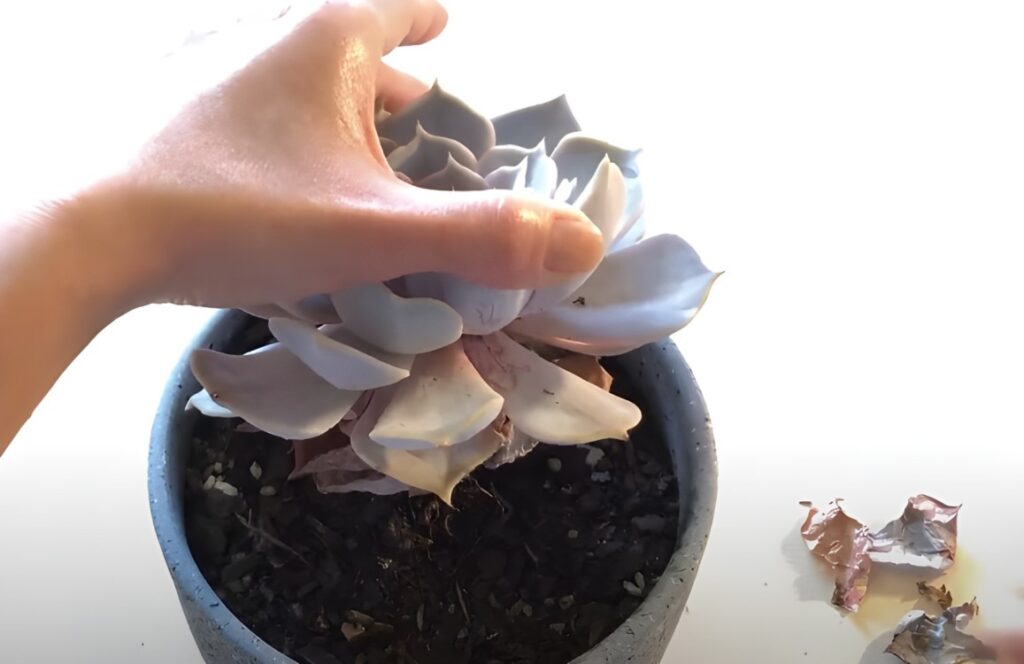
Invasive Potential
Despite its ability to spread quickly from its original planting site and pose no threat to native ecosystems, Ghost Echeveria is not considered an invasive species.
Nurturing Echeveria-Lilacina: Aesthetic Appeal and Pet-Friendly Care
Ghost Echeveria, is a captivating succulent renowned for its distinctive appearance and low-maintenance care. A common concern among pet owners is whether Echeveria-Lilacina is toxic to cats. Fortunately, this succulent is generally safe for feline friends.
However, it’s essential to be cautious, as some pets may still experience mild digestive discomfort if they ingest the plant. In terms of benefits, Echeveria Lilacina offers more than just aesthetic appeal.
Its unique rosette shape and pale, silvery-green leaves contribute to a visually pleasing indoor or outdoor garden. The plant’s resilience and adaptability make it an excellent choice for those new to succulent care.
To ensure optimal growth, proper care is crucial. This includes understanding the specific watering needs of Echeveria Lilacina, as it thrives in well-draining soil and requires infrequent watering to prevent root rot.
The hybrid varieties of Echeveria Lilacina add an extra layer of intrigue, with their unique colors and patterns, making them a sought-after choice for succulent enthusiasts.
Cultivating Echeveria Lilacina: Propagation, Blooming, and Varietal Splendor
Propagation and blooming are key aspects of Echeveria-Lilacina care. If you’re looking to expand your succulent collection, understanding how to propagate Echeveria-Lilacina is essential.
The process involves carefully removing offsets, or “pups,” from the parent plant and allowing them to establish roots. Additionally, encouraging blooming enhances the visual appeal of your Echeveria Lilacina.
Adequate sunlight is crucial for blooming, as the plant requires bright, indirect light to produce vibrant flowers. Echeveria-Lilacina’s flowering and foliage add a touch of elegance to its overall aesthetic, with delicate, pastel-colored blooms.
As you delve into the specifics of caring for this succulent, considerations such as pruning, repotting, and understanding its temperature, humidity, and fertilizer requirements become essential.
The varied varieties and types, including variegated, marble variegated, and variegata, offer options to suit diverse preferences, contributing to the overall charm and versatility of Echeveria Lilacina in succulent gardens.
Conclusion
Finally, Echeveria Lilacina offers enchanting color transformations and ethereal rosettes that depict nature’s artistry.
Plant lovers of all levels will enjoy this succulent in their indoor and outdoor spaces since it thrives with minimal care.
Ghost Echeveria provides year-round visual interest through its unique growth patterns and delicate blooms, making it a preferred addition to any garden.
FAQs
How do you care for Echeveria lilacina?
It requires bright, indirect light, well-drained soil, and minimal watering. This type of plant is relatively low maintenance. Do not overwater the soil. Root rot can occur when the soil is overwatered.
Is Echeveria lilacina an indoor or outdoor plant?
There is no difference between growing Echeveria-lilacina indoors and outdoors. In order to keep the leaves from being scorched, place the plant in a sunny location, but avoid direct sunlight. It is best to plant your plants outdoors in an area that receives bright, indirect light.
Does echeveria need sun or shade?
This plant prefers indirect, bright lighting. Keeping its leaves out of direct sunlight will prevent them from scorching. The majority of Echeveria cultivars cannot tolerate direct sunlight, but some varieties can.
What are the disadvantages of echeveria?
The roots of Echeveria can rot if they are overwatered. Additionally, they should be protected from cold temperatures as they are sensitive to frost.
Does Echeveria lilacina need sunlight?
It is true that Echeveria-lilacina requires sunlight to flourish. Ensure that it receives bright, indirect light by placing it in a sunny location.
What temperature is good for Echeveria lilacina?
Despite its preference for warm temperatures, Ghost Echeveria can withstand temperatures up to 90°F (32°C). The plants should, however, be protected from frost and cold temperatures.
How do you propagate Echeveria lilacina?
A stem cutting or leaf cutting can be used to propagate Echeveria-lilacina. Plant a stem cutting with at least 2-3 leaves in well-draining soil after it has callused over for a few days.
Propagation from leaf cuttings is as simple as removing a healthy leaf and placing it in a well-draining soil mix. New leaves will eventually grow from the roots of the leaf.
What is the common name for Echeveria lilacina?
Echeveria lilacina is commonly known as Ghost Echeveria.
How do you water Echeveria lilacina?
Whenever the soil dries completely, Echeveria-lilacina should only be watered lightly. Do not let the plant sit in water for long periods of time and allow excess water to drain completely.
Is Echeveria lilacina toxic to pets?
It’s safe to have Ghost Echeveria around pets because it’s non-toxic. If pets are around plants, it is best to supervise them so they don’t chew on the leaves, which can upset their stomachs.
What is the best way to water my Ghost echeveria?
Ghost echeverias should be watered with the soak-and-dry method. In this method, the soil is allowed to dry completely before being watered again after flooding the soil with water until it runs out of the drainage holes.
When is the best time to fertilize my Ghost echeveria?
In spring and summer, when your Ghost echeveria is actively growing, fertilize it. Apply a liquid fertilizer every two weeks that is diluted to half strength.
Should I protect Ghost echeveria from sun exposure?
Light that is bright and indirect is preferred by ghost echeveria. The leaves of this plant can be scorched if they are exposed directly to sunlight. A few hours of direct sunlight each day are tolerated by some varieties of Ghost echeveria.

